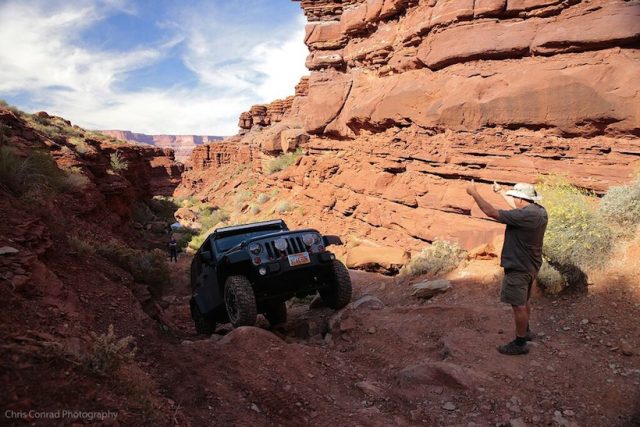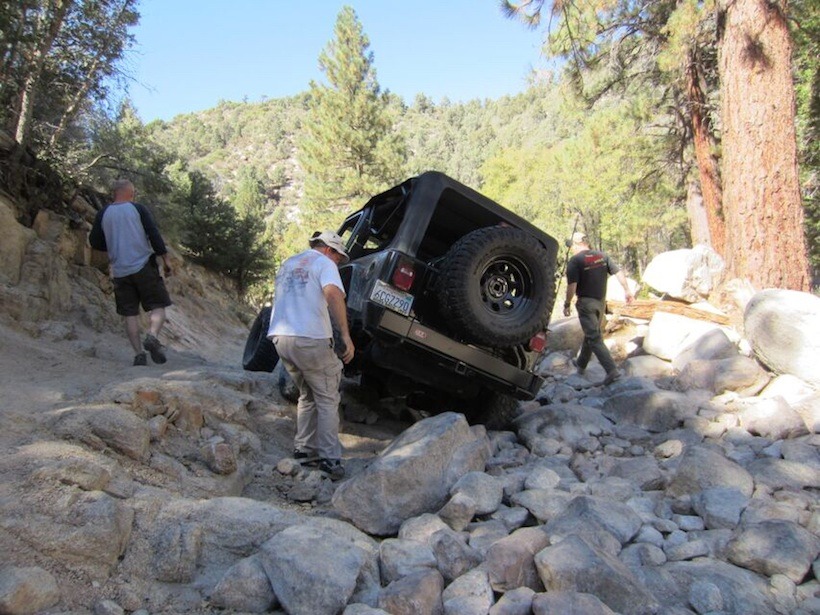The following article on spotting contains a combination of information derived from the The Four -Wheeler’s Bible, 2nd edition, by Jim Allen and from a conversation with John Marshall, certified I4WDTA and owner of Coyote Adventure Safari and Coyote Land Tours. In The Four -Wheelers Bible, Jim states that it is vital that the spotter and driver understand and follow the rules/hand signals that they have established. Jim outlines his philosophy, techniques and hand signals. John does the same and adds a different twist as well as some additional helpful tips. Both are presented here as possible techniques to use when spotting. The first portion of the article comes from Jim Allen’s Four-Wheeler’s Bible.
Nobody rides for free. The person sitting in the passenger’s seat should assist the driver in keeping an eye out for hazards, particularly on their side of the vehicle. It doesn’t take much skill to notice a fender is in danger of being torn off, so virtually anyone can be of some use. Should the person riding “shotgun” be skilled and knowledgeable in the four-wheeling arts, so much the better.
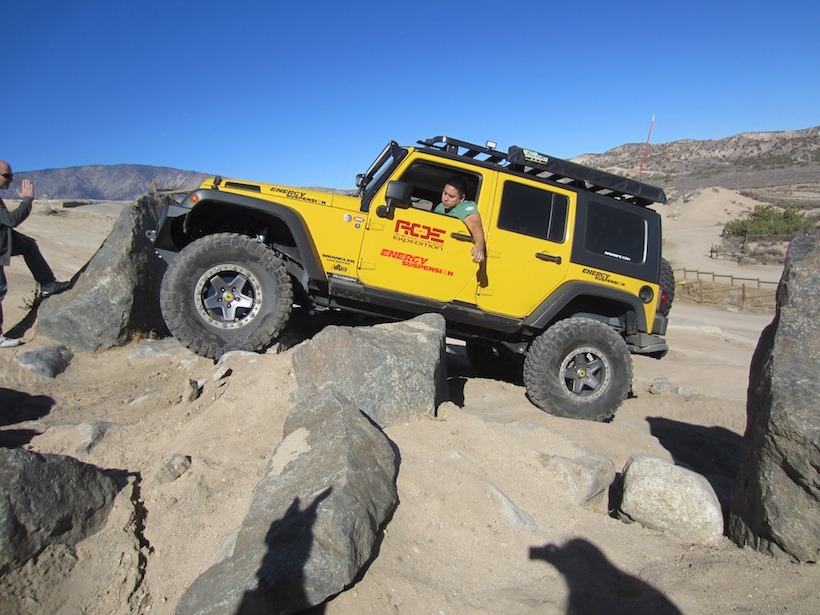
There comes a time when a view from outside the cockpit is needed, and a clued-in spotter can be walking disaster prevention. Using a spotter comes with a price; the driver has to relinquish some control. The only way it works well is if the driver gives the spotter control of the situation and does no more and no less than ordered by the spotter. The driver and we’ll assume he’s the owner of the vehicle, retains overall veto power and the option to “fire” the spotter, but a spotter is worthless if the driver doesn’t follow instructions. The spotter then takes responsibility for what happens, assuming the driver follows instructions. Friendships and closer relationships have gone awry in situations where mistakes were made and damage resulted. It pays to keep an adult perspective on these things, a little que sera sera (whatever will be will be) perhaps, and also to delegate spotting duties to people who are qualified. If you get help on the trail from relative strangers, it’s a little more problematic. Another que sera sera time, I suppose.
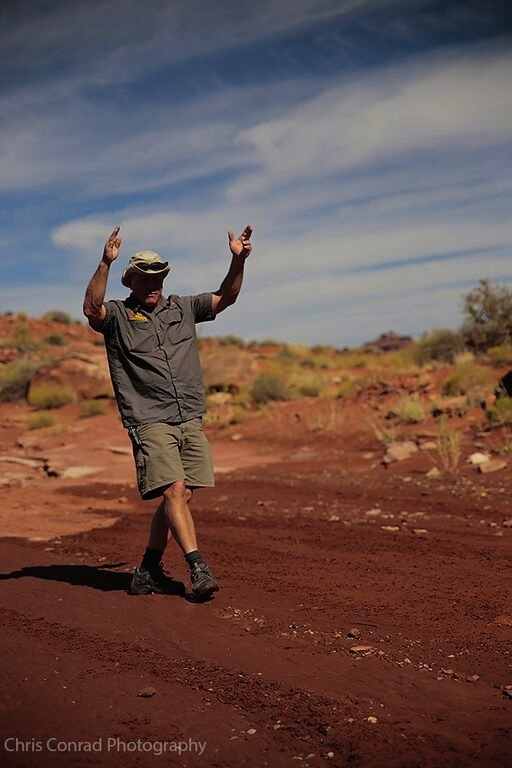
Basic Spotting Rules.
There are some basic rules that both spotters and drivers should understand. Some clubs have adopted spotting rules like these for use at events. You can invent your own. The main thing is that both the spotter and driver are reading from the same page of rules. Even spectators can be a help by understanding what’s going on and letting the spotter and driver do their work without interference. That doesn’t prevent you-the-spectator from helping; just do it in a way that doesn’t disrupt the process.
General:
-At least 99 percent of spotting should be nonverbal. Use hand signals. This avoids words being misunderstood or drowned out by engine noises or spectators. Verbal conferences should be face to face with the vehicle stopped and secured.
-There’s only one official spotter: The person the driver has chosen. The spotter should ignore the more vocal armchair quarterbacks on the sidelines. If spectators get to be a problem, make an appeal for silence. If you are not the spotter and you see a better or safer way, make a quiet comment to the spotter.
-The spotter directs other helpers, such as in piling rocks, pushing, and so on.
Driver Tips:
-You have the right to refuse a spotter, or fire him, buy you also take the responsibility for what happens.
-You are handing over 50 percent of the control and 50 percent of the responsibility to your spotter.
-Keep your eyes on the spotter. If you can’t see the spotter, stop and get his attention. It’s worse than uncool to run over your spotter.
-Do no more and no less than your spotter directs. Continue with the last instruction until your spotter tells you to stop, or changes the instruction. If it becomes clear that your
spotter isn’t paying attention, stop and get his attention.
-If you disagree with your spotter, don’t just ignore him. Stop and have a conference. His perspective is a little different from yours, so it’s good to know why he’s made a particular decision.
Spotter Signals from Jim Allen:
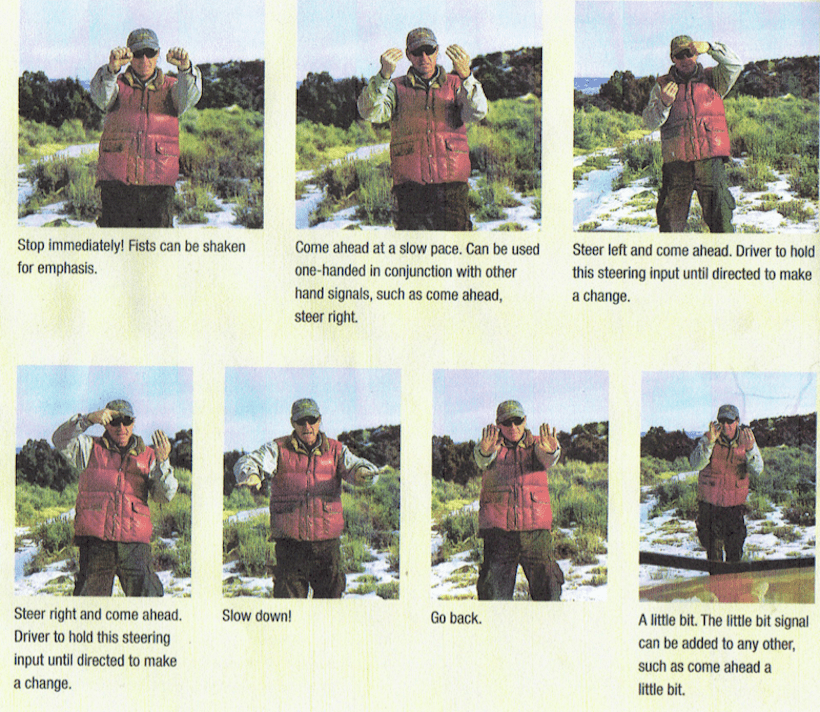
Spotter Tips:
-Take the time you need to get a clear picture of the problem and a good solution before giving directions. The odds are good that you are dealing with someone’s pride and joy. Take as much care as if it were your own.
-Stay in view of the driver.
-Make clear, bold hand signals that can’t be misunderstood.
-Don’t stand too close to the line of travel. A foot slipping off a clutch pedal or an accidentally applied throttle could take you out. In some cases standing 10 or 15 feet away
gives you the advantage of being able to see the whole picture.
-You are responsible to keep any extra help clear of the vehicle when it moves. Rock pilers have a bad habit of getting run over if the spotter isn’t paying attention.
-Watch your step. Spotters spend a fair bit of time walking backward or moving around on instinct while watching their vehicle. While not always possible, it’s better to stop your
vehicle and find a spot to stand than to split our focus between walking uncertain ground and providing guidance. Seek the best way to protect yourself and the driver throughout the
run.
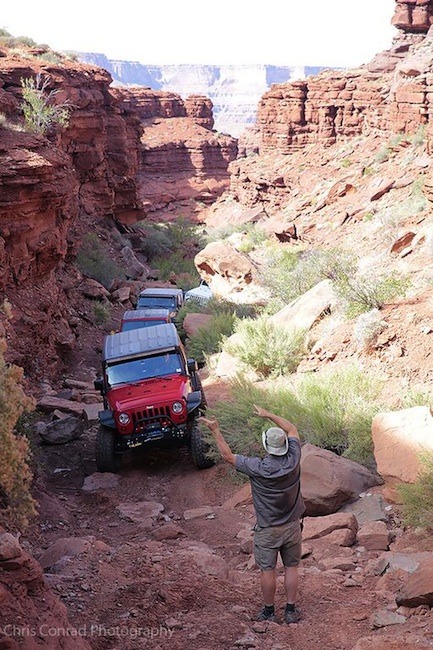
A while back, I was speaking with John Marshall, owner of Coyote Adventure Safari and Coyote Land Tours about this spotting article. John is a certified Off-Road Driving Instructor (I4WDTA) and has been guiding, off-roading, and training folks for 30 years. Here are a few things that came up in our conversation.
“I feel that 100% of commands should be delivered by both hand signals and verbal commands. To avoid any confusion, some words are eliminated from the start such as “right” and “left”. They become “passenger” and “driver”, to indicate the direction of a wheel adjustment. “No” and “go” can be confused, so I use “stop” instead of “no” (along with a hand signal). This understanding between the spotter and driver eliminates confusion with verbal directions. To further reduce confusion, I keep my hand signals high and uniform. Both hands up to passenger side, to driver side or directly overhead lets my driver know which direction I want them to move in. I use small “karate chop” type movements meaning come forward in whichever direction my hands are pointing. I find that most people over`compensate when directed to turn their wheel. Before starting out, I let them know that I will give verbal cues to quantify how far they should turn. “A click” is equal to a quarter turn of the wheel, so I will use my hand signal and also say “1 click to passenger” etc. I never tell my drivers to straighten out because they may not know how, due to the amount of information they are processing while driving over challenging terrain. I take their tires back to a forward position by using the hand signals and “click” commands, for example, “Two clicks passenger”. This way, the driver makes small, incremental adjustments to the wheel which increases the overall level of safety. I provide a steady stream of verbal cues along with my hand signals and ask that the driver has his window down and is focusing on my directions.”
.
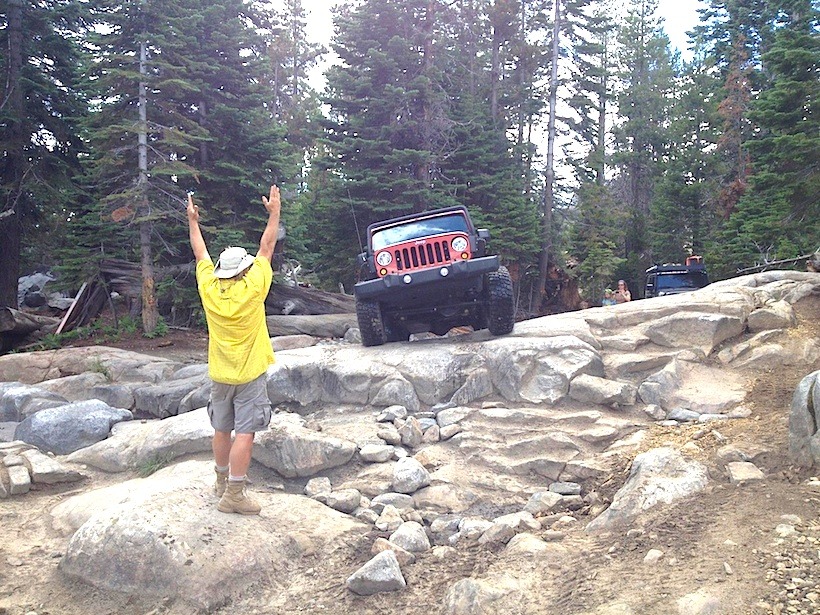
The bottom line for spotting is making sure that the driver and spotter are on the same page in terms of the use of particular hand signals and verbal cues. Expectations about the relationship between the spotter and driver should be set beforehand and safety should be set as the ultimate priority. If you want to learn more about, or brush up on your spotting skills, take a 4WD training class from a certified International 4-Wheel Drive trainer in your area. Then get out there and…
TAP into Adventure!
TAP sends Special Thanks to:
- Jim Allen for letting us use the contents of The Four -Wheeler’s Bible 2nd edition for this article.
The Four-Wheeler’s Bible can be purchased at Amazon.com and is TAP recommended. - John Marshall, certified I4WDTA and owner of Coyote Adventure Safari and Coyote Land Tours for sharing his wisdom with us.
- Bernhard Leitner of Leitner Designs for his spotting photo at Hungry Bear.
- John Marshall and Chris Conrad Photography for sharing their photos with us.
Any further tips on spotting? Write them here in the comment section.
Edited by: Lori Palmer







